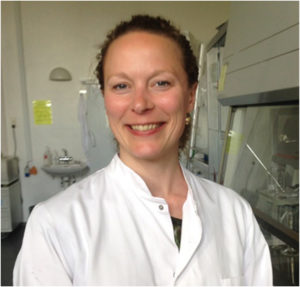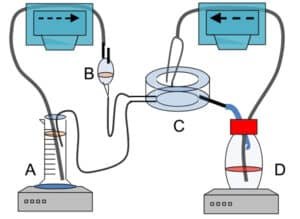Experiments using placental material shed light on transport of dangerous chemicals
Experiments using placental material shed light on transport of dangerous chemicals
 In the field of reproductive toxicology the use of animal experiments have very poor predictive value. The length of pregnancy, the developing stages of the fetus are very different between animal species, and the placenta exhibits a larger degree of species difference than any other organ making it difficult to interpret animal data with respect to predicting fetal exposure in human pregnancy.
In the field of reproductive toxicology the use of animal experiments have very poor predictive value. The length of pregnancy, the developing stages of the fetus are very different between animal species, and the placenta exhibits a larger degree of species difference than any other organ making it difficult to interpret animal data with respect to predicting fetal exposure in human pregnancy.
To investigate the human fetal exposure we use the human placental perfusion model. The ex vivo human placental perfusion model is a technically challenging and sophisticated model, which is an alternative to animal studies with the potential to reduce and replace animal tests on fetal exposure. Human placentas are donated directly after birth and taken to the laboratory to study the fetal exposure to environmental chemicals and endogenous substances. Perfusion models are very useful in studying effects and actions of various live tissues, in order to extrapolate the findings to a real life exposure situation. Placental perfusion models are most commonly used to investigate the exchange of substances between mother and fetus including potential metabolism of these, but also to study the effect of different factors on the placental tissue, including morbidity and hormone production alterations. We are developing the model to investigate the effect of different substances on the placental function, which can have significant impact on the well-being of the mother and the fetus during and after pregnancy.
The human placental perfusion facility in our laboratory in Copenhagen is close to the maternity ward at Copenhagen University Hospital (Rigshospitalet) from where we obtain viable placentas, and we have had ethics approval and logistics in place since 2004. In the placental perfusion model a single unit (cotyledon) from a human term placenta is re-perfused directly after birth. Fetal and maternal circulations are re-established, and the transport of the chosen test-substance can be investigated by adding the substance to the maternal compartment and follow the distribution of the substance over time into the placenta and across to the fetal compartment1. Inter-laboratory comparisons with two laboratories in Finland have validated the system2. Cellular transport mechanisms and pathways across the human placenta can be investigated after the experiment by confocal and electron microscopy of perfused placental tissue3,4. Data from our studies of human placental transport distinguish substance transport by molecular weight, size and degree of chlorination/bromination by in vivo, ex vivo and in vitro studies5-11. Our studies confirmed the importance of studying placental transport in an intact placenta, as the results could not be re-created using an in vitro cell model, and receptor-binding studies12.









